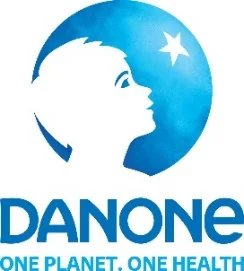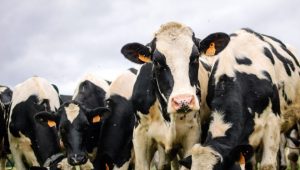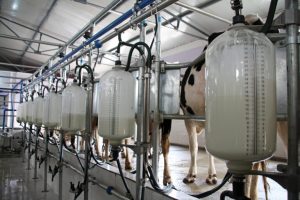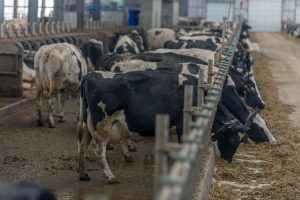
The first two trading days of this week have been notably more active for us than in previous weeks. With the bulk of our trades going through our butter books, the market remains on a downward trajectory. However, even we must admit that the decline is progressing at a slower pace than anticipated. In previous years, price changes were far more dramatic—though, as the saying goes, history doesn’t repeat itself, but it certainly echoes. It seems we are listening to a really slow echo…. Meanwhile, cheese and powder prices continue to move sideways, although sentiment in the cheese market appears less stable than in the powder market.
We frequently get asked why our outlook leans more bearish than bullish, so let’s break it down.
We assume most of you have set foot in an IKEA store at some point.
Our first apartments were likely furnished with the legendary “BILLY” bookshelf, a “VILME” couch, and an assortment of kitchenware that we never needed, never would use, but somehow purchased anyway. The brilliance of IKEA lies in its ability to make every individual item seem like a bargain—until you reach the checkout and suddenly wonder how all those “small” purchases have added up to an eye-watering total. We like to call this “IKEA Economics.”
I often tell my wife she applies IKEA Economics a bit too liberally when she goes shopping. While at the same time, we’d like to think IKEA Economics are also the driving force behind Get Fair Dairy, small commissions in high volumes. But even on good trading days like the past two, she somehow manages to spend money faster than we can bring it in. Clearly, we need to work on our IKEA Economic balance.
But enough about domestic finance—how does IKEA Economics apply to our market view in dairy? We’re seeing numerous small, relatively minor bearish signals, which in isolation may not seem significant. However, when you stack them all together, much like items in an IKEA cart, they start to amount to something more substantial.
Let’s start with imports. Compared to last year, we’re seeing an uptick—particularly in butter, where volumes from Norway, Ukraine, and New Zealand have increased due to the significant price differentials observed in October and November of last year. This should taper off as EU butter prices ease. Similarly, SMP and WMP imports have been higher year-on-year, adding more supply into the mix.
Exports, on the other hand, are facing headwinds. The ongoing FMD issues have taken a small bite out of opportunities, while relatively higher cheese and butter prices are limiting deals. Cheese exports to Korea, Japan, Taiwan are experiencing competition on Mozzarella, and difficulties due to FMD on Gouda. Powder exports have already been struggling for months, and with a potential Trump presidency on the horizon, the best-case scenario for international trade is stability—worst case, it becomes a bearish drag on the market.
Milk collection has sparked some of the most heated debates. Ireland, the UK, Poland, and Italy are performing well, whereas France, Germany, and Belgium are underwhelming. The looming return of blue tongue remains something the bulls like to bring up, and the bears like to dismiss. While the overall EU trajectory remains uncertain, current high commodity prices continue to support strong milk prices, incentivizing farmers to keep production levels up. A 1-2% increase may not be likely, but all indicators—including other market analyses—suggest that more milk is coming.
And then there’s demand—stable at best, but weaker in certain sectors. The chocolate industry is reporting softer demand, butter sales remain questionable, and cheese continues to be the most resilient commodity. In Germany, economic downturns typically weigh on consumption, and retailers are struggling to maintain margins without raising prices further. All of this suggests at least a slight dampening of dairy demand.
So, circling back to our IKEA Economics analogy: a slight increase in imports, a slight decrease in exports, a slight rise in production, and a slight decline in demand. Each factor alone might not be enough to shift the market dramatically, but together, they paint a different picture. A few extra drops of milk here and there don’t seem like much—until you realize that, collectively, we’re talking about a substantial surplus. This will inevitably put downward pressure on dairy commodities. And let’s not forget—we are still operating at historically high price levels. Butter at €6000 is still well above the five-year average, as is cheese at €3800, so if we expect we drop to these prices, can we be called really bearish? SMP, on the other hand, appears to be the most undervalued, making it the least bearish of our forecasts.
Now, let’s dive into the current markets:
Liquids: Heavy
The liquids market already felt heavy yesterday, even though trading volumes remained relatively low. Cream prices in Eastern Europe softened, with reported averages around €7750. Western European cream is still holding slightly higher, but with plenty of offers at €8050-8100, a drop below €8000 seems imminent. We have now taken of 20-25% of the top price of cream since November. Meanwhile, SMC is experiencing firmer demand and limited offers, which may keep prices steady or slightly higher.
Butter: Heavy but Supported
The butter market remains under pressure. With a weak cream market and lower demand for February and March, prices for near-term contracts have slipped below €7000. We brokered volumes for February and March at €6950, with increasing offers at this level and bids now below €6900. March/April prices have moved down to €6800-6880, while Q2 trades in NL/DE/BE have settled at €6800, and Irish butter is now being offered at €6750.
Producers are ramping up sales, with Polish suppliers now quoting below €6800, while Western EU producers have adjusted just below €7000. Delivered prices from NL and Belgium producers are coming in around €6800 for April and May. Irish producers are holding firm below €7000, though we’re hearing reports of some sales at €6700 FCA Ireland. We find the waiting stance of Irish coops strange. Since the start of this year they have missed out on bids from as high as € 7300 now down to € 6700. They are reporting to wait for a bounce, but every week it seems that bounce is € 100,- further away. Buyers, at the same time, seem to be shifting their focus toward Q3 and Q4 and less and less to March and Q2.
The downward correction is occurring relatively slowly, primarily because end-users are willing to lock in purchases just below their cost price. After last year’s costly mistakes, fewer participants are keen to gamble on lower prices. Securing margins, even slightly below cost, is now something they are more than happy to report to their management. But once those buyers have a large portion covered, they will shift to optimization strategies, leaving the rest of their purchases open for lower levels. We start the day with offer for
- 6 loads of NL/DE/BE fresh/frozen butter on Q2 at € 6850
- 6 loads of N-Irish Sweet Cream butter for Feb at € 6880
- 6 loads of Polish Sweet Cream butter for March at € 6850
- 6 loads of NL/DE/BE fresh/frozen for Q3 at € 6950
- 6 loads of Irish Lactic for Q2 at € 6800 FCA Ireland
Cheese: Sideways
Not much to report here. While the slightly weaker butter market is feeding bearish sentiment into the cheese market, tight short-term supply is keeping sellers patient. For now, sideways movement continues. We still have the following markets
- 6 loads NL/DE Gouda for Q2 at € 4350 bidded at € 4200
- 6 loads of Mozzarella for February / March at € 4125 bidded at € 4000
- 6 loads of Mozzarella for Q2 at € 4150, bidded at € 4030
- 4 loads Gouda Feb/March at € 4350, bidded at € 4220
- a bid for 4 loads of Cheddar, max 4 months old at € 4650
Powders: Heavy Negotiations
The powder market is busy, but the bid-ask spread remains significant. Even in cases where bridging the gap seems feasible, both buyers and sellers are sticking firmly to their positions. Given current SMC conditions, SMP prices could find some support, which explains sellers’ firm stance. The market does seem poised for an upward breakout, and all fundamentals support this—but months of rangebound trading have left buyers reluctant to chase higher prices.
We have bids for
- 300mt Armor SMP codex mh, fresh, with standard export docs for March ets €2450 fca fr
- 200mt SMP codex mh (CH origin), €2490ex for March ets
- 200mt non-standardised smp min 35% EU27, €2400 fca NL
- 300mt SMP, aged (max 1,5 years), EU27 (no german material), MH or LH, prompt; €2350 fca nl/be
We have offers for
- 300mt SMP, codex mh Armor/Euroserum (all plants) in sellers option for March ets at €2470 fca fr
- 300mt, Q2 (3x100mt) SMP codex MH Solarec/Uelzena, €2550 fca be/de
- 200mt SMP codex mh Solarec/Uelzena Feb/March at €2540 fca be/de
- 250mt non-standardised SMP MH weighted average protein 36,5%, UK origin, Aug 24 production or fresher, 25kgs, Feb collection @ €2510 fca Belgium
- 300mt Lakeland (IE) non-standardised SMP MH min 36% as is, 25kg/bb (sellers option), feb/march etd @ €2550 fca NL
You can now read the most important #news on #eDairyNews #Whatsapp channels!!!
🇺🇸 eDairy News INGLÊS: https://whatsapp.com/channel/0029VaKsjzGDTkJyIN6hcP1K

























